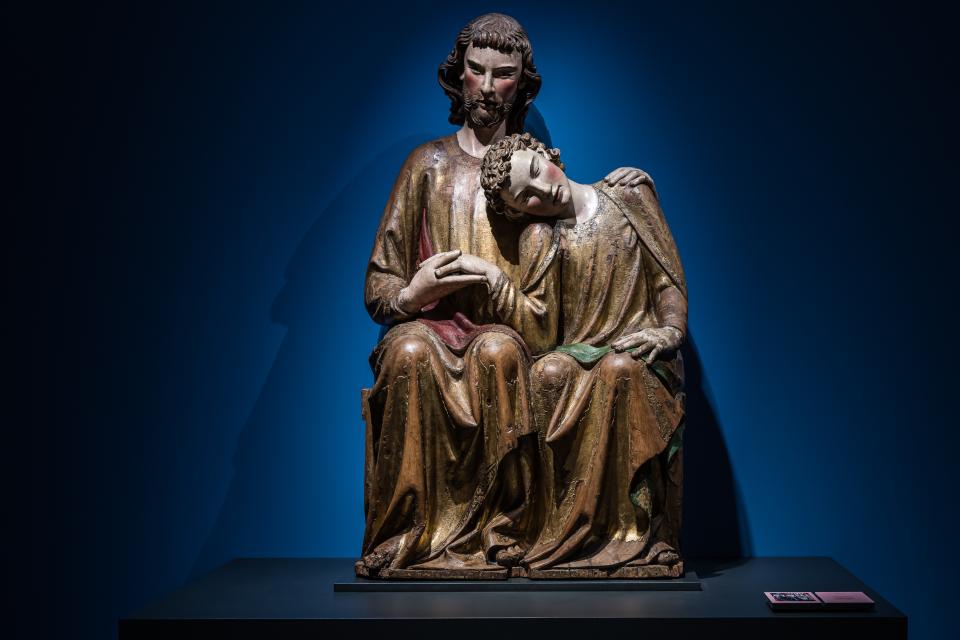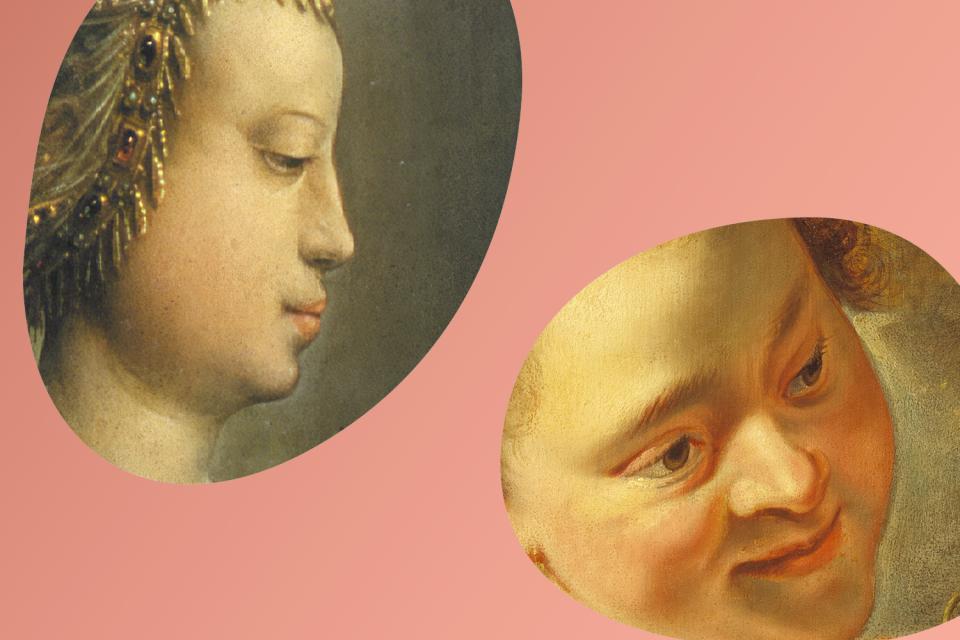This representation of Jesus is known as the Man of Sorrows. He has risen from the dead, yet at the same time his appearance is as it was at his death. Sometimes he is alone, and sometimes mourning angels accompany him, as is the case here. Below on the left, we can see what came before: Jesus on the cross.
Doleful
Such an emotive scene was intended to provoke compassion in those who saw it. This is why Christ is in the foreground. Often, a panel like this was kept in a room for private devotion. In this way, its owner could deepen his or her faith. The doleful angels could be said to be setting an example.
Blood
At the bottom right, Jesus’ blood is being collected in a chalice. In the Eucharist, the chalice contains the blood of Christ, transformed into wine. Right at the top, God blesses his son, and a dove is flying: the Holy Spirit.
Specifications
- Jacob Cornelisz. van Oostsanen (1450/1470-1533)
- Man of Sorrows, ca. 1510
- Oil on oak, 28.9 x 20.3 cm





